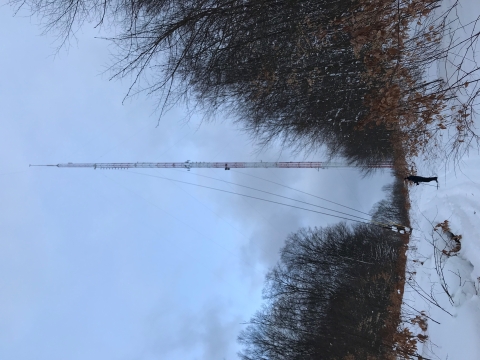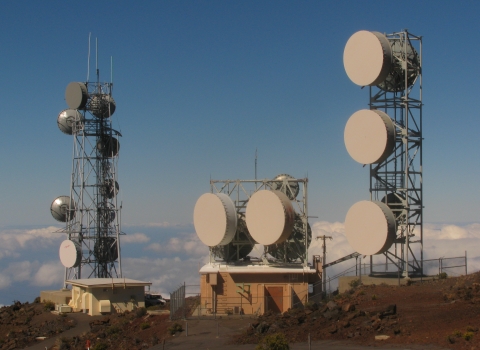Not all heroes wear capes! Some of them wear federal uniforms.
Lucky for us, our story begins with a group of people that worked together to help birds and laid the framework for others to follow for decades to come.
The Beginning of a Movement
“At first I noticed a dead bird or two at the bottom of the tower, just a few times. I never noticed a significant mortality event. But we didn’t know for sure what was happening at the time that we started. I found a rusty blackbird, an owl, some kinglets, brown creepers and other migrants,” said Chris Schumacher.
Chris worked with U.S. Forest Service on Huron-Manistee National Forest in the Cadillac Ranger District of Michigan, and there was a communication tower on the U.S. Forest Service property. In 1991, the company had reached out to the U.S. Forest Service as they were due to renew their Special Use Permit for operating the tower.
Chris not only found some dead birds at the tower, but he was also aware of bird mortality issues at other towers. Chris wanted to use the process of the Special Use Permit to monitor this particular tower and see if there was any way he could help reduce bird mortality. There was a paper he read that just came out on tower lighting and how dangerous it could be to birds, and Chris thought that if he could get the company to change the lights on the tower, it could possibly protect birds.
But no one had done this before. Chris was the very first one to take this kind of project on.
“We really had to do this on the fly! I didn’t know how to set this type of program up so we just used the best information we had available and we did our best.”
The issue of bird collisions with towers during migration season was becoming more known to the masses, and there was some initial research on the negative impacts of communication towers on birds – specifically how the lights on towers impact birds.
This early research suggested that changing the lights on communication towers from a steady light to a flashing light would help reduce bird mortality.
Bringing this type of current research forward could be tricky though. Would the Forest Service want to take the risk? Would the communication tower owner want to deal with this?
This is where everything started to come together.
The person at the U.S. Forest Service who handled Special Use Permits worked with the company and even contacted the experts to get specific guidance on what to change at the tower to decrease mortality. Chris’s leadership at the U.S. Forest Service supported this work, and the company even provided the funding to monitor the tower. How often does all of that happen?
“This was a very special project with quite a few people involved. A lot of people were involved who weren’t even biologists or birders. But seeing dead birds at this tower really helped open peoples’ eyes about the issues that birds face during migration.”
From One to Many
This first tower broke the mold for reducing bird mortality at communication towers. But how long was it just that one tower that made changes? How long was it until other towers joined in this effort?
This particular tower in the Huron-Manistee National Forest Cadillac Ranger District was built in 1960, and Chris had the lights officially changed in 1991.
This roughly 103 story tower (1125 feet tall) was the lone tower with flashing lights for about 20 years. Other tower owners joined when it became easier for them to change their lights in 2012. But then in 2017, there was NPR story that aired on this issue, and that’s when things really started taking off.
Today, almost 17,000 U.S. towers have flashing lights instead of steady lights, that’s about a third of all the lit towers in the United States! Owners of Canadian towers are also making the cost-saving change! Tower owners are making great progress in reducing bird collisions while saving money. Every year, millions of birds are saved. With a bit more progress Chris’s early work will result in a landscape of bird friendly, efficient towers.
There is a concerted effort with our partners in the tower industry and at the Federal Aviation Administration and the Federal Communication Commission to extinguish steady lights on communication and light towers with only flashing lights, which has the added benefit of reducing energy costs and the number of tower climbs (that’s when someone has to climb the tower to change the lights, which inherently has a lot of risk associated with that) as well.
Inspiring Change
In 2012, scientists estimated that nearly 7 million birds were dying every year due to collisions with communication towers. Most of the birds that collide with towers are night migrating songbirds on their journeys to and from warmer climates for the winter.
But thanks to Chris, and many others who have followed, for taking a chance on making this change and saving millions of birds!
For more information and resources on how to change lighting at communication towers, please visit our Communication Towers page.







